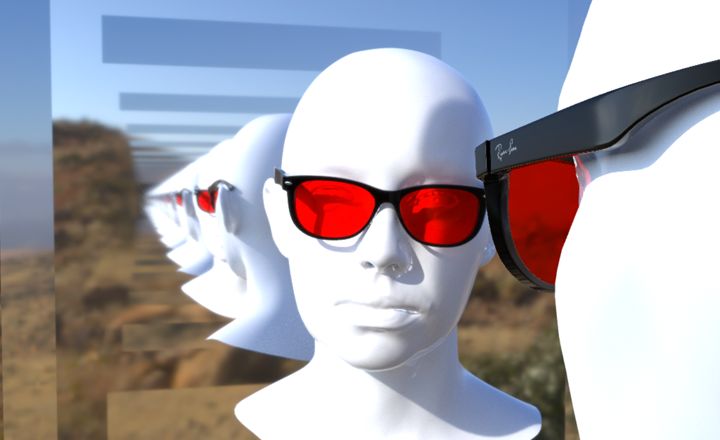RT Multi-Bounce Reflection
Renders Multiple bounce reflections with Ray Tracing.

The Reflection Multi-Bounce node simulates specular lighting of solid objects accurately with support for multiple bounces with varying roughness and other material attributes. Only specular interactions are handled by this node, making it a good compliment for a baked diffuse lightmap pass. By only processing specular bounces it can be more efficient than using the Pathtracer node. Results are achieved by casting lots and lots of rays, randomly distributed, and accumulating the results. The sum of all the random rays ends up with a smooth, converged image over time. As such this node can be slow and may not be suitable for real-time use.
Typically, only a very small number of rays per pixel can be cast per frame at real-time rates - but to produce a converged image, hundreds or thousands of rays must be accumulated per pixel. It is possible to use the “Samples” parameter to control how many rays are cast per pixel per frame at the cost of longer frame times. However, the more common solution is to use continuous refinement. This casts few or even only one ray per pixel per frame, varying that ray randomly each time and averaging the result, so the image converges from noisy to smooth. When anything in the scene changes or animation occurs, refinement resets. This allows you to work on your scene using a fast but noisy render as you edit it; then leave it to refine for a few seconds to see how it looks when converged.
Raytracing will need to be enabled on the root node for this node to work.
Use the “Refine Render” button to enable continuous refinement.
These properties control the core behaviours of the node.
| Parameter | Details |
|---|---|
| Path Tracer Shader | Loads in pathtracer shader. |
| Samples | The number of rays per pixel per frame. |
| Max. Glossy Depth | The maximum number of glossy bounces per ray. |
| Ray Bias | Biases the ray start position away from the spawning surface - to reduce fighting artefacts in exchange for less accuracy. |
| Sample Clamp | The maximum brightness allowed for a given ray. |
These properties control how an Environment Map is used with the mirror reflections.
| Parameter | Details |
|---|---|
| Environment Brightness | Sets the brightness of the environment map reflections. |
| Environment Specular | Toggles on and off environment map specular. |
| Environment Filtering | Sets the brightness off environment filtering. |
| Name | Description | Typical Input |
|---|---|---|
| Object Nodes | 3D Objects noded Inputted into the node will be the only objects that have RT Multi-Bounce Reflections. | 3D object |
| Environment Map | The input for the environment map node. | Environment map |
| Transform Modifiers | Apply the transforms of another node to this node. | Null |
| Target Node | Modifiy the rotations of the node to always direct the z axis towards the input. | Null |
| Local Transform Override | Apply the transforms of another node to this node, relative to its parent. | Null |